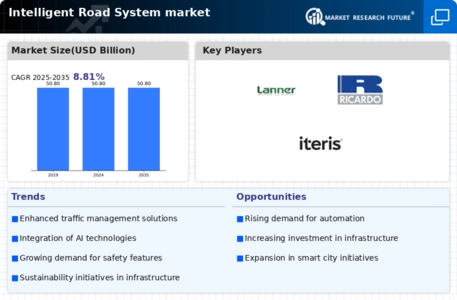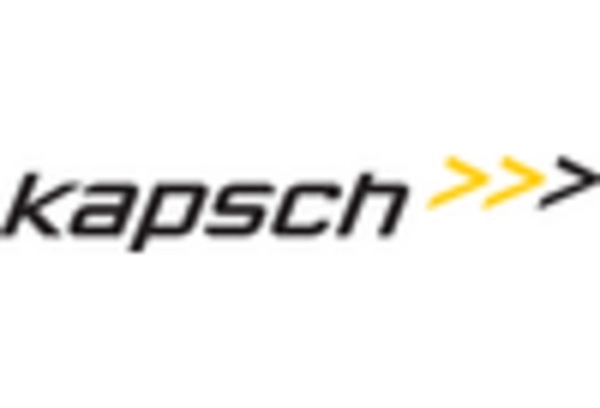Market Share
Intelligent Road System Market Share Analysis
The Intelligent Road System (IRS) market has grown rapidly, reflecting the global focus on smart infrastructure and availability. Innovative advances, urbanization, and the need for controllable mobility fuel market growth. Productive and sophisticated road infrastructure are crucial as cities struggle with growing populations.
Modern technologies like AI, IoT, and computational reasoning are shaping the IRS industry. These innovations enable proactive traffic managers, accident prediction, and asset allocation by allowing road systems to collect and analyze massive amounts of data. Brilliant sensors and cameras around road networks are already ubiquitous, improving intelligent traffic management systems that simplify traffic flow and road security.
In addition, independent vehicle organization has exploded, affecting intelligent road systems. As self-driving cars grow more common, roadways must have advanced communication and routing capabilities. Intelligent Road Systems help integrate autonomous cars into current traffic infrastructure, ensuring a safe and efficient combination with traditional transportation systems.
Maintainability drives market trends despite innovation. Governments and localities are increasingly focused on eco-friendly transportation solutions to reduce the environmental impact of traditional automobiles. Intelligent steering calculations improve traffic flow, reduce congestion, and restrict fuel use in Intelligent Road Systems. The addition of electric vehicle (EV) charging infrastructure to intelligent road networks supports the global push for greener transportation.
An linked ecosystem is another IRS market trend. Intelligent road systems are moving beyond traffic management to provide consistent communication between automobiles, pedestrians, and the overall framework. This integrated approach improves metropolitan adaptability and vehicle safety and productivity. Vehicle-to-Everything (V2X) communication is at the forefront of this trend, allowing cars to share data with each other and the system to improve traffic flow and prevent accidents.
As the Intelligent Road Systems industry increases, PPPs and collaborative initiatives are becoming more common. State agencies are increasingly working with private companies to develop and implement smart road plans. This cooperative approach speeds up the implementation of cutting-edge technologies, allowing cities to swiftly adapt to changing transportation needs.
Online protection is becoming standard in the IRS industry. With further computerization, intelligent road systems are more vulnerable to digital threats. Smart transportation companies must protect these systems from malicious attacks to maintain their reputation and security. Ventures and improvements focused on improving Intelligent Road Systems' network safety framework are rising.









Leave a Comment